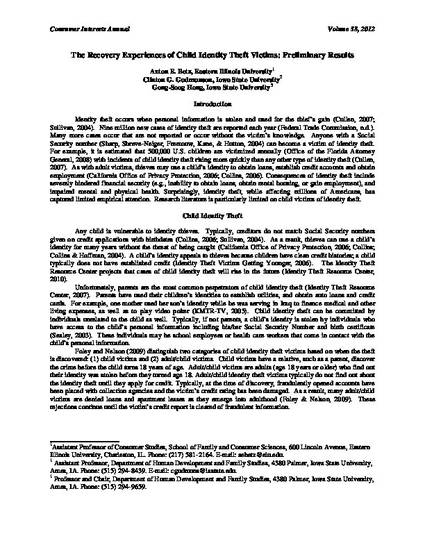
Identity theft occurs when personal information is stolen and used for the thief’s gain (Cullen, 2007; Sullivan, 2004). Nine million new cases of identity theft are reported each year (Federal Trade Commission, n.d.). Many more cases occur that are not reported or occur without the victim’s knowledge. Anyone with a Social Security number (Sharp, Shreve-Neiger, Fremouw, Kane, & Hutton, 2004) can become a victim of identity theft. For example, it is estimated that 500,000 U.S. children are victimized annually (Office of the Florida Attorney General, 2008) with incidents of child identity theft rising more quickly than any other type of identity theft (Cullen, 2007). As with adult victims, thieves may use a child’s identity to obtain loans, establish credit accounts and obtain employment (California Office of Privacy Protection, 2006; Collins, 2006). Consequences of identity theft include severely hindered financial security (e.g., inability to obtain loans, obtain rental housing, or gain employment), and impaired mental and physical health. Surprisingly, identity theft, while affecting millions of Americans, has captured limited empirical attention. Research literature is particularly limited on child victims of identity theft.
Available at: http://works.bepress.com/gong-soog-hong/2/
This article is from Consumer Interests Annual 58 (2012): 12 pp. Posted with permission.